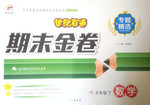题目内容
The audience when they watched his funny performance.
A.burst into laughing B.burst out laughter
C.burst into laughter D.burst in laughing
C
【解析】
试题分析:考查词语辨析。Burst into和burst out都有“突然进入某种状态”的意思,但是burst into后面通常接名词,burst out后面通常接动名词;Burst in 译为“闯入,打断”。句意:观众看到他那滑稽的表演时突然爆笑起来。综合上述,故选C。
考点:考查词组辨析

 世纪百通期末金卷系列答案
世纪百通期末金卷系列答案We are a primary school in England. Our students start arriving at our playground from about 8:45 a.m. Most of the children live nearby, so they walk to school. But some children have to travel to school by car. Each of the children is dressed in a school uniform (校服) and carries the homework and packed lunch in a schoolbag.
School starts at 8:55 a.m. The teacher on duty blows a whistle (哨子) and the children line up in their class groups. They wait quietly for the teacher to send them to their classrooms. When they arrive at their classrooms, the children empty their schoolbags and put their homework in their boxes. After the children take their seats, the teacher reads out each child’s name in turn. Upon hearing his / her name, the child replies “yes, Mrs. (the teacher’s name)” and the teacher writes down whether the child is in school or not.
And then at 9:10 a.m. the children attend an assembly in our main hall. They sit on the floor in rows with the youngest children at the front and the older children at the back. As the children enter the hall, they listen to music quietly. Each week we have a different musical theme (主题). Besides, the children also listen to stories.
After the assembly, the first lesson of the day begins at 9:30 a.m. Our morning lessons are usually English and Maths. Each of these lessons lasts an hour. Between classes, the children have their morning break from 10:20 a.m. to 10:35 a.m. They eat their snacks (小吃) or play games like football on the playground. At the end of the break, the teacher on duty blows a whistle. The children stand still and wait to be told to line up.
Each day, the children have their lunch break from 12 noon to 1:10 p.m. Most of the children bring their own packed lunches from home. A packed lunch usually consists of sandwiches, fruit, a drink and a packet of crisps. Some children have a school dinner cooked in our school kitchen. While the children are waiting to have lunch or after they have finished eating, they play games on the playground or attend lunch-time clubs. We have teachers on duty, who look after the children during lunch breaks. After the lunch break, the children have afternoon lessons, which continue until 3:15 p.m. when the children go home.
A typical school day at a primary school in England | |
Paragraph outlines | Supporting details |
Arriving at school | ● The students start 1.______ the school playground from about 8:45 a.m. ● They come to school on 2.______ or by car. |
The start of school | ● At 8:55 a.m., the teacher on duty blows a whistle to make the children3.______ up, and then sends them to their classrooms. ● The teacher 4.______ the attendance (出席) of each child. |
5.______ | ● At 9:10 a.m. the children attend an assembly in the main hall, where they listen to music or stories. ● They sit on the floor in rows at different6.______ according to their ages. |
Morning lessons | ● The first lesson of the day begins at 9:30 a.m. and each class lasts as 7.______ as an hour. ● The morning lessons are usually English and Maths. ● The morning break is from 10:20 a.m. to 10:35 a.m., when the children eat their snacks or play games. |
Lunch breaks and afternoon lessons | ● The lunch break starts at 12 noon and 8.______ at 1:10 p.m. ● During the lunch break, the students 9._____ lunch and play games or attend lunch-time clubs. ● School is 10._____ at 3:15 p.m. |